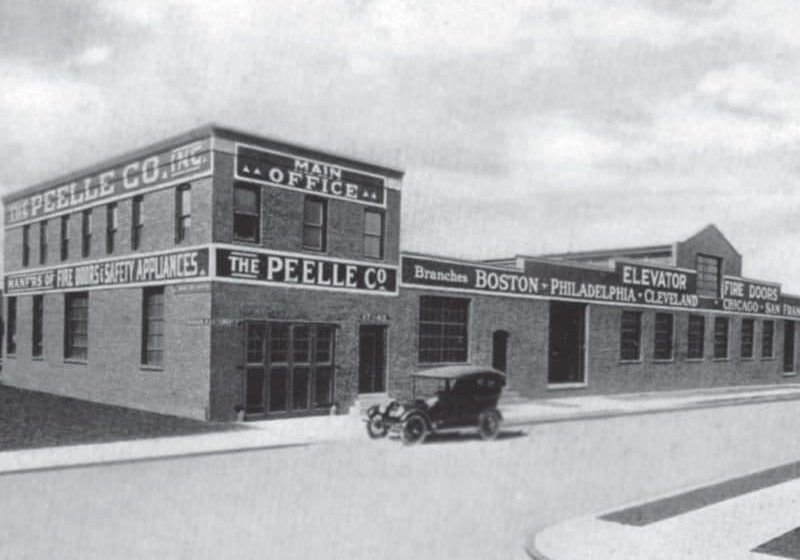This month, our cover story explores the newly reopened Polaris revolving lounge atop the Hyatt Regency in Atlanta. The lounge, and the elevators that serve the hotel, are iconic, replicated many times over in buildings designed by John C. Portman, Jr. However, in their infancy, the atrium elevators attracted crowds all by themselves. Your publisher well remembers the ground-floor bar in 1967 with its luxurious plants and giant birdcages. It was a noisy place, always packed with tourists and locals rubbernecking at the elevators and parrot squawks echoing through the atrium. Often, actual hotel guests were outnumbered by visitors who had never seen such unusual elevators. The lobby had a circus-like quality, and the elevators were part of the show. For perhaps the first time since Elisha Graves Otis cut the ropes at the Crystal Palace, our industry’s equipment was more than transportation — it was entertainment. Many visitors continued upward to the spaceship-like Polaris lounge, which was a tourist attraction of its own.
In this issue, our focus is on elevator doors and door operators. Doors are the first contact the public has with our equipment (excluding call buttons), and they speak volumes about us. Doors are how we “dress up” to face our customers. In the case of freight doors, how they look may not be as important as how they perform over the long haul. Passenger doors may be refined, gaudy, sturdy, extravagant, staid or even a little sexy. But if they are dirty or scratched, or not quite closed, it is a first impression that cannot be erased. I wouldn’t go so far as to say elevator doors are the windows to our souls, but how they look and act says everything about the quality of our products.
The articles on doors and their operators delve into history and bring us forward to modern equipment. Peelle’s Michael J. Ryan recounts the “Evolution of Freight Elevator Doors,” taking us back to 1904 with the first patent for a freight door, then brings us forward to the widest vertically sliding biparting door, created for GMC in Canada. In “Fire Resistant Doors in Europe,” Sandro Marchiori of Prisma discusses how doors were certified for fire rating before the European Union came together. He notes that since EN 81-50 (on fire-rated doors), it has been discovered that the size of the door and the structure to which it is fastened are critical factors in passing fire tests. Our regular history buff and correspondent, Dr. Lee Gray, writes a fascinating article titled “Door Reversal Devices: 1930-1960,” which tells of Westinghouse’s pursuit of a device to reduce passenger injury related to automatic doors. Much of this search occurred in the 1950s, when operator-less elevators came into being. Westinghouse, Moline Accessories and Otis leaned toward photo-light barriers (large and very visible to passengers), but there was one invention to come out of Elevator World, Inc.’s home of Mobile, Alabama — a mat placed before the door to trigger reopening. Ralph M. Newman, writing for Columbia Elevator in “Elevator Door Operators: Then and Now,” describes the days of human operators then moves to early mechanical door operators, first harmonic ones and, after many changes, moving to linear and wireless.
One of the things we try to do on a regular basis is take the temperature of our industry. Based on news coming into our offices daily, it is definitely rising in the U.S. Planned construction is one of the benchmarks we watch, and that continues to increase, especially in New York City. In the three years to 2017, the value of private nonresidential construction is forecast to increase at an annualized rate of 7.6%, fueling higher demand for elevator systems in office towers, hospitals, manufacturing facilities and other nonresidential and industrial buildings. In line with that growth, the U.S. Census Bureau finds population growth is shifting back to the city core in 381 metropolitan areas — and those people need housing and infrastructure.
Employees and suppliers are also on the move. With a full page of U.S. transitions in this issue, it is obvious that hiring is up. More significant than that, however, is the number of companies in the industry opening new facilities (Schindler in Hanover, Pennsylvania; MEI Elevator Solutions in Norristown, Pennsylvania; and GEDA USA Elevator and Material Lift Company in Houston), expanding existing plants (Hollister-Whitney Elevator Corp. in Quincy, Illinois) or branching out into new fields in the industry (Elevator Concepts by Wurtec Ltd.). The U.S. is not alone is waking up to a new day: Hyundai picked up 1,668 units in Iraq, London has 236 high-rise buildings planned or under construction, Africa’s middle class continues to grow, and Brazil’s growing economy has led to a strategic partnership between LGTECH Elevadores S.A. and Japan’s Mitsubishi Electric. Taken together, the world’s gauge moved from “cautiously optimistic” in the first quarter of 2014 to “movin’ on up” in the second. So, as you peruse this issue, take heart that the trends reported on here show signs our industry is, indeed, looking up.
Get more of Elevator World. Sign up for our free e-newsletter.









